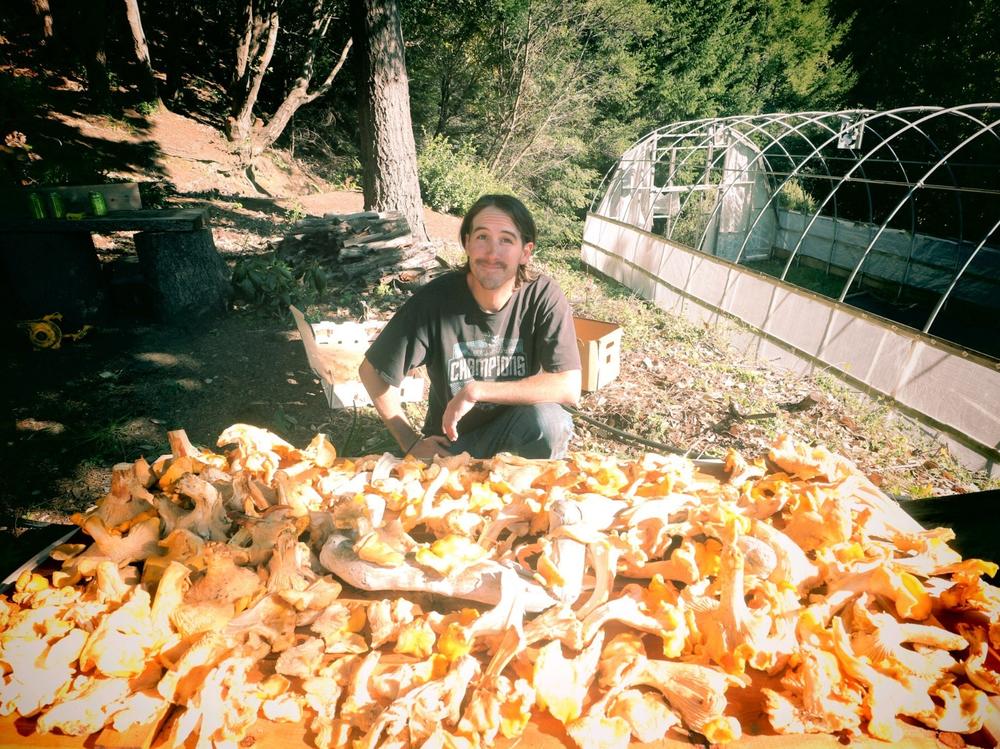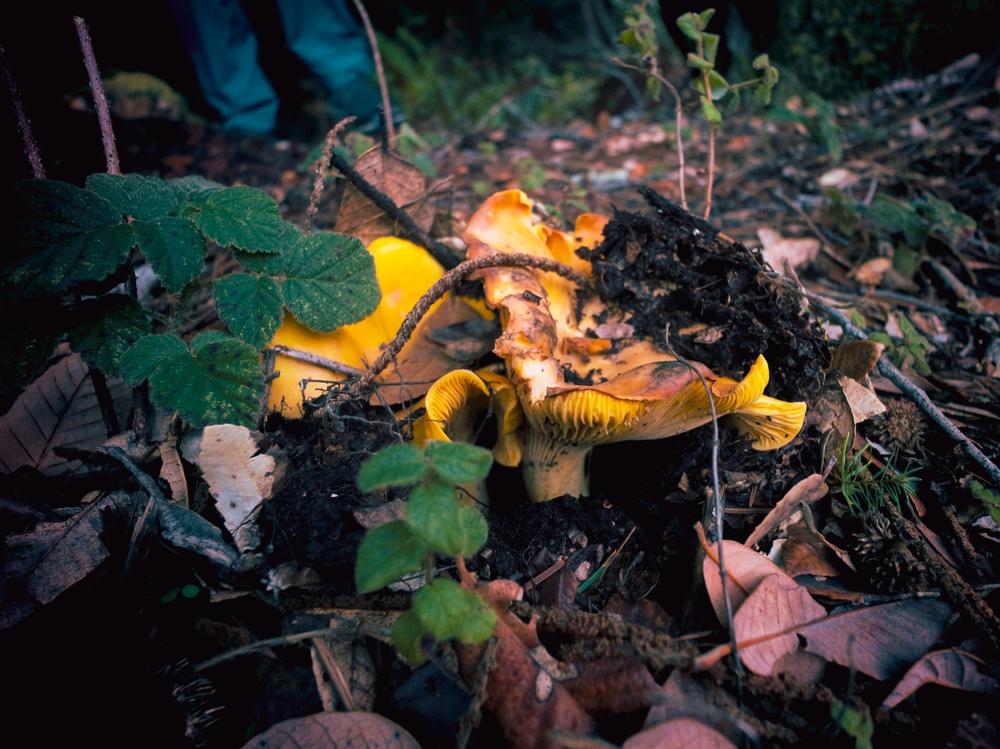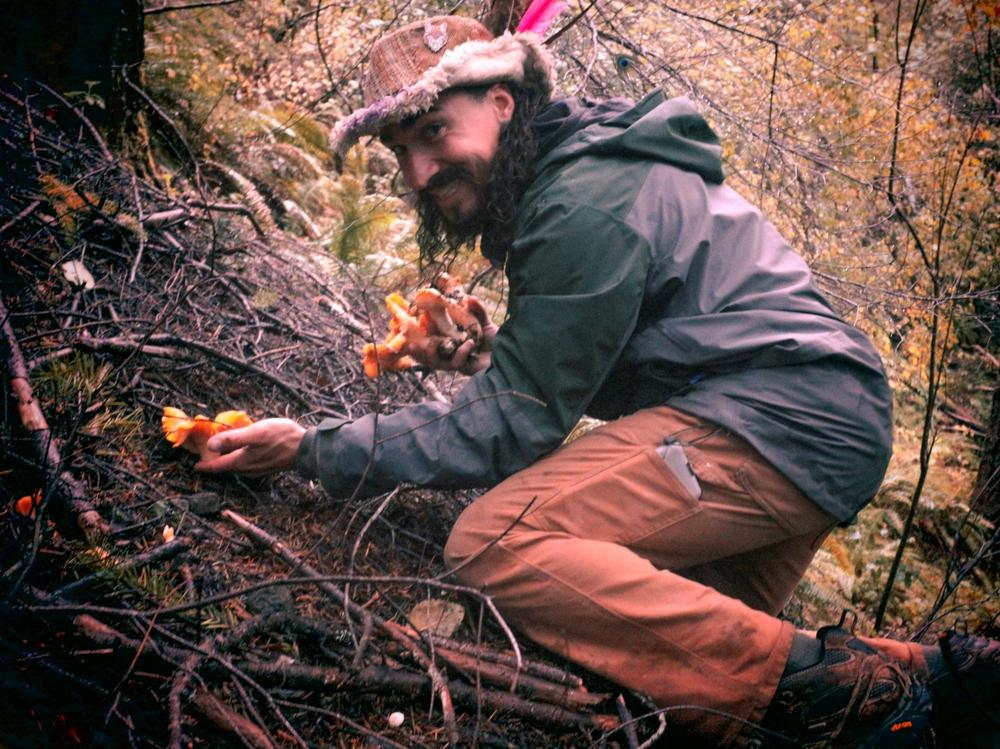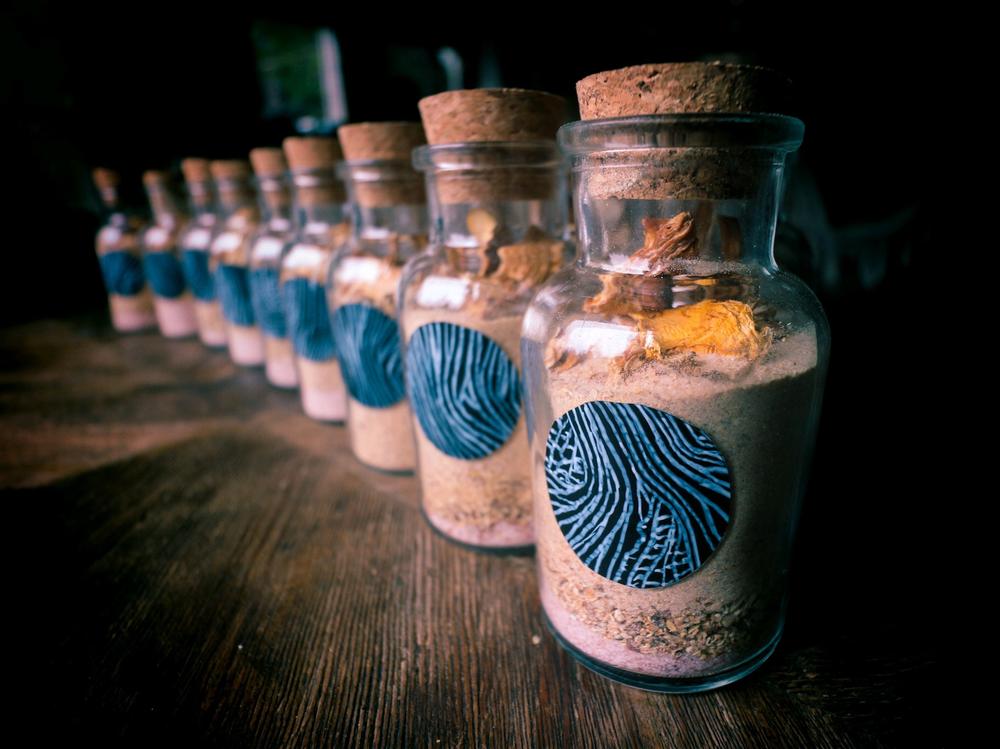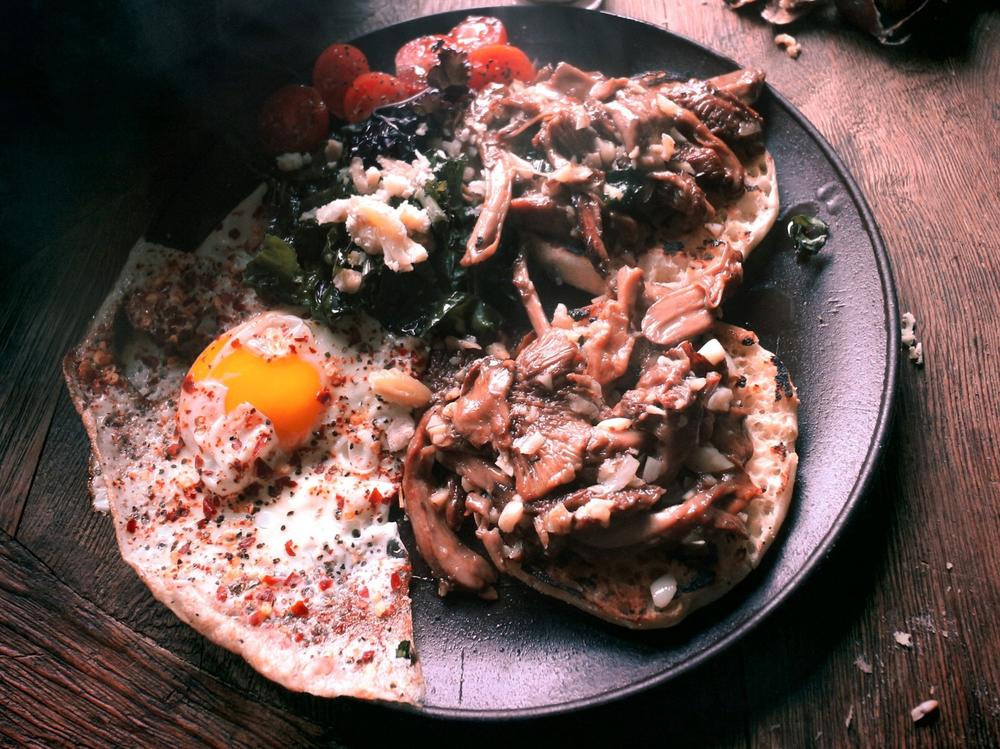Section Branding
Header Content
These mushroom foragers hit the jackpot. Then they got creative
Primary Content
Tis the season – mushroom season, that is.
Dan Gebhart and Jordan Anderson are good friends and long-time foragers, and this year they hit the jackpot. They live on California's Lost Coast, in Humboldt County, where it's mostly undeveloped and natural wildlife abounds.
Every day they eat something they've foraged, and they forage for everything from mussels off the coast to wild berries in the woods. But this year, the mushrooms were prolific. One day in October they were foraging and came across a bunch of this golden, flower-like mushroom – chanterelles.
Chanterelles are a hot commodity for food lovers and foragers. They can't be easily cultivated, so most of the time the only way to get your hands on one is to find it in the wild.
Gebhart has been chanterelle hunting for 10 years, so he'd like to think he's gotten pretty good at it. He says he can even sniff them out, like a mushroom detective.
"Jordan doesn't really believe me, but every time that I have stopped and started smelling the air and said that I could smell them, we found some shortly after that," he says. "And I'm not sure if I'm actually smelling the mushrooms or if it's just the way that the forest smells after it first rains, when everything comes alive again after being the dry season."
"But chanterelles do have a distinct smell. It's sort of fruity and earthy at the same time. You know, buttery apricot and an earthiness to it that just smells like, you know, warm, fertile forest humus."
Anderson maintains a healthy amount of skepticism.
"Well, my theory was that maybe he spotted them first and then just told me he had another spidey sense ... but there's some truth to what he's saying. There's a sense of it," she says.
While the jury is still out on Gebhart's special mushroom senses, the pair definitely know what they're doing. In their combined two decades of foraging, Gebhart and Anderson have learnt a lot of tips and tricks from their friends. Things like knowing where different wildlife grow, the habitats in which they thrive, what kind of trees to look for.
Gebhart learnt that chanterelles tend to grow in the same spots as they have in the past. So over the span of a month they went back to check the regular spots along with some new ones, finding more than 200 pounds of this special mushroom.
Gebhart says the conditions this year were perfect, with rain in late October and relatively warm temperatures.
"When that happened, it was very, very abundant this year as opposed to last year when we didn't get a lot of rain and we got some frosts in late October. And, you know, pretty much very little fungus life last year," he says.
Gebhart posted a picture of the winnings on Facebook, with the caption "chanterelle abundance". It was in the public group "Mushroom Hunters of Humboldt" where people come to share their foraging wins, ask for help identifying certain mushrooms, and generally talk all things fungus.
Needless to say, the post got a lot of attention.
Some people were congratulatory, others in awe. Some people seemed to be a little bit envious. A few were interested in whether they were selling some of their haul, and Gebhart and Anderson connected with a few people from the group and gave them some for free.
They've been giving a lot of chanterelles to family, friends, and mushroom enthusiasts. These fungi are worth quite a bit – their bounty has a resale value of some $4,000. But the two have chosen not to sell them.
"There's something about finding something wild in the forest and then turning around and selling it ... I just don't feel right about selling something I find in the forest. It's not something I cultivate myself," Gehbhart says.
Anderson agrees, saying that bringing money into it doesn't make it fun anymore.
"The fun part for me was we dehydrated the bulk of it and grinded it up and sifted it and then combined it with salt. And it just makes a good Christmas present, you know?"
Anderson loves packaging the homemade mushroom salts. But that's just one of the many ways she likes to use these mushrooms.
"The way I cook chanterelles is, you know, with chardonnay and butter and a little bit of honey and garlic. And then if you just side it with some pasta or some rice, that's always good," she says.
Gebhart has a different approach: "Any wild mushrooms you forage you pretty much have to dry sauté them first to get all the water out, which takes away their rubbery texture. And then you add a bunch of butter."
"And I personally like to do like a little sweet and spicy thing, so I'll add a little bit of honey to that and some crushed red pepper along with salt and pepper and fresh garlic."
For these two foraging friends, the joy comes from the adventure more than the winnings.
"I enjoy the hiking and the foraging and the the thrill of finding them in the woods," Gebhart says. "Obviously, I love to eat them as well. I'd say even more than eating them, I like to give them away. I like to just see people's faces when you show up at their house and hand them a box of fresh chanterelles."
And if you don't forage, Anderson's advice is to get out and explore.
"It's just fun to adventure out there and explore all the drainages you wouldn't normally explore and just have an appreciation for it. I highly recommend it."
This story was produced for radio by Mia Venkat and edited by Christopher Intagliata.
Copyright 2021 NPR. To see more, visit https://www.npr.org.
